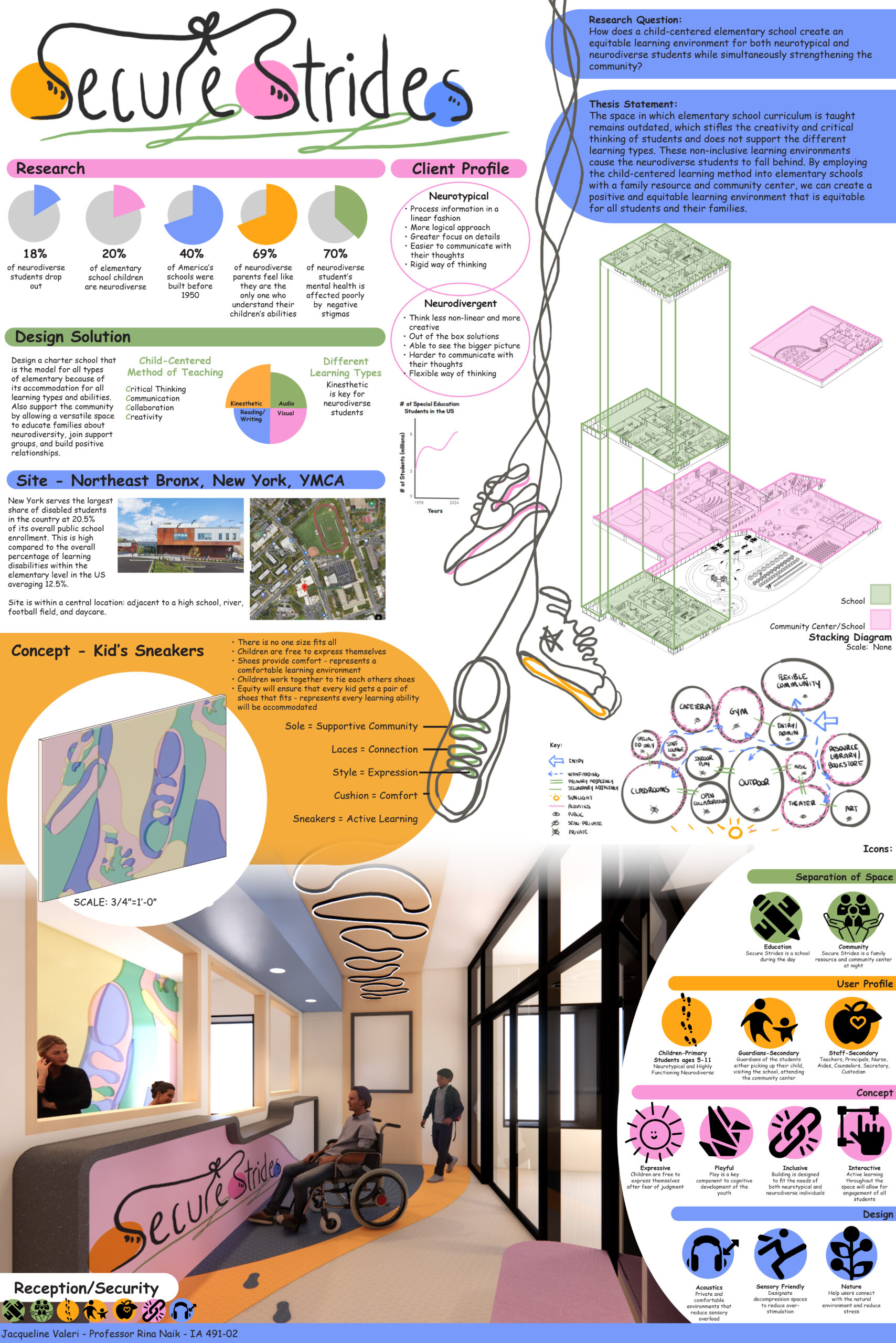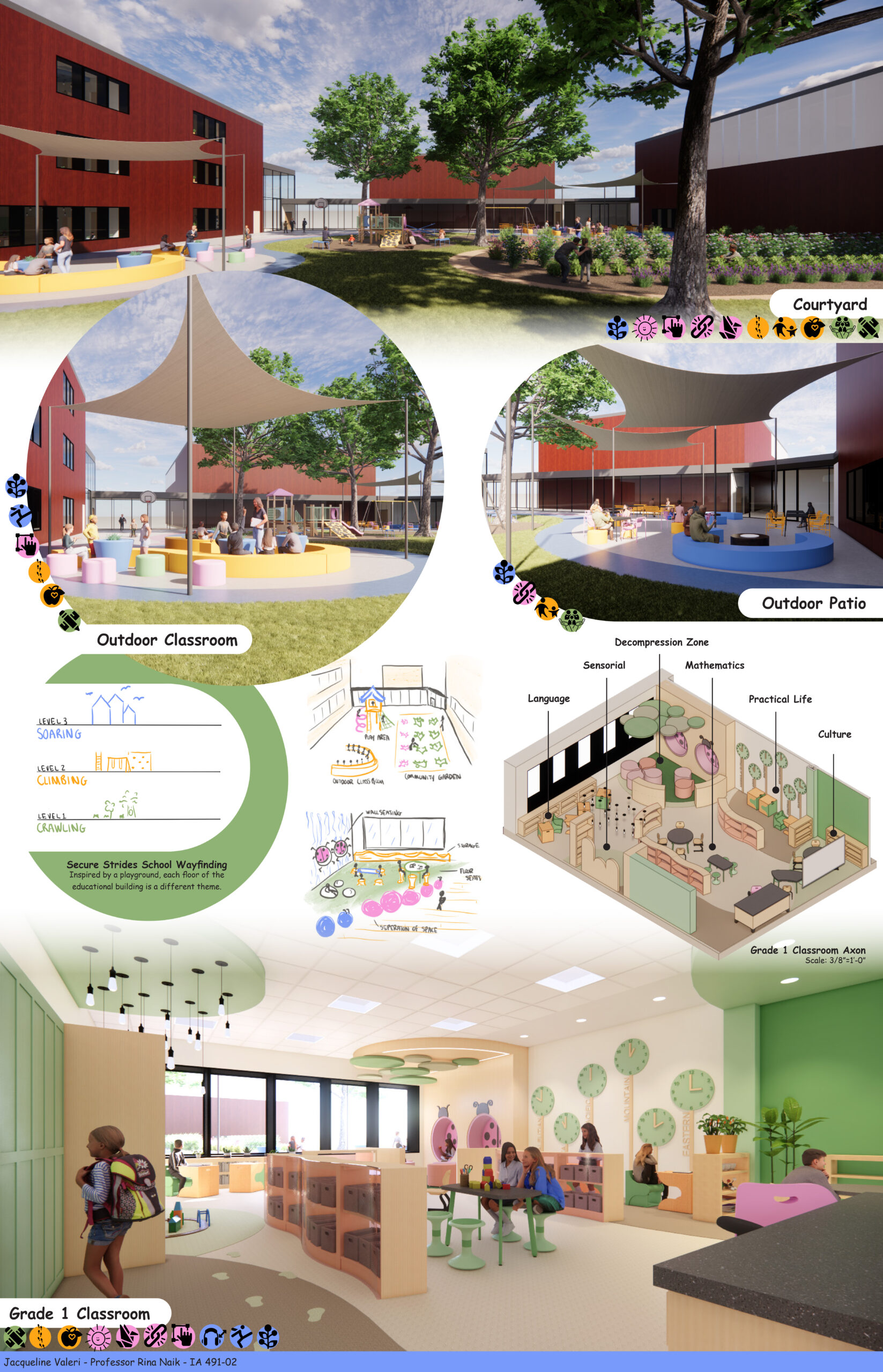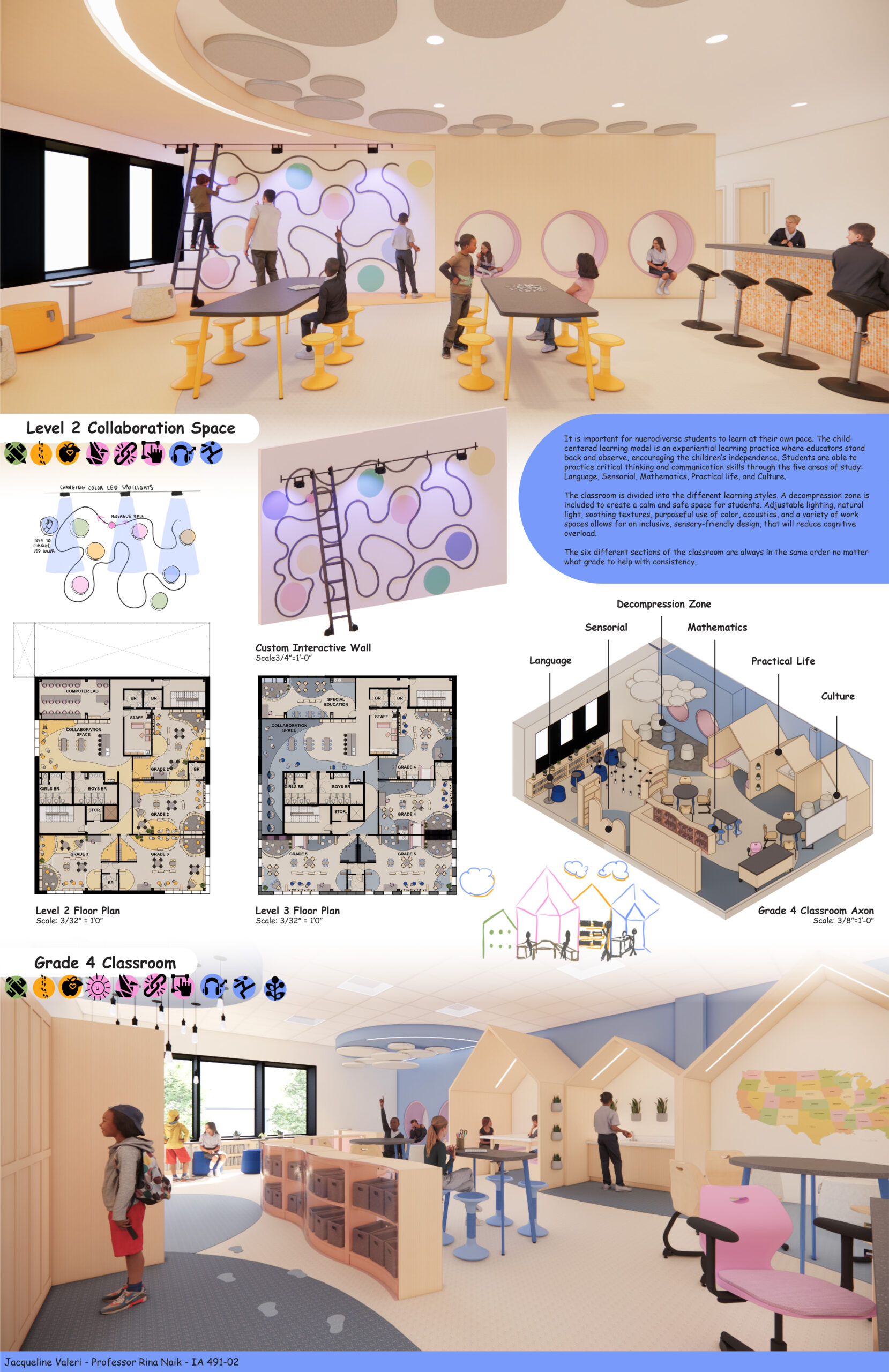Artist Biography
Jacqueline will be graduating this spring with a Bachelor of Fine Arts in Interior Architecture. During her time here at Endicott, she continued to be recognized on the Dean’s list and is a member of the Kappa Pi International Arts Honors Society. During her free time she was a dancer and choreographer in EDGE (Endicott’s Dance Group) and the Recruitment Subcommittee Head for Relay for Life. Jacqueline completed her first internship at Boston Art Inc. She then interned at Lavallee Brensinger Architects in Boston. Jacqueline will continue to work as an Educational and Healthcare Designer at Lavallee Brensinger Architects post-graduation. Her thesis derived from her interest in educational design and her time as an elementary ed substitute teacher.
Thesis Abstract
The spaces in which elementary school curriculum is taught remains outdated, which stifles the creativity and critical thinking of students and does not support the different learning types. These non-inclusive learning environments cause the neurodiverse students to fall behind. There is also a lack of support for neurodiverse students and their families. The majority of parents whose child is neurodiverse feel like they are the only ones who understand their children’s abilities, leaving the parents feeling helpless and the child to feel misunderstood. By employing the child-centered learning method into elementary schools with a family resource and community center, we can create a positive and inclusive environment that is equitable for all students and their families. Secure Strides’ goal is to be the model for all types of elementary education because of its accommodation for all learning types and abilities. Secure Strides’ family community and resource space will support the community by allowing a versatile space to educate families about neurodiversity, join support groups, and build positive relationships. Key design solutions include interactive learning throughout. Play helps to stimulate the mind and allows children to retain information easier. Sensory friendly design such as acoustical properties, natural daylighting, adjustable lighting, use of color theory, and soothing textures found throughout help to reduce the cognitive overload that neurodiverse students often experience. The variety in seating arrangements allows the user choice and comfort. Finally, all of the classrooms are laid out the same to help with wayfinding.




